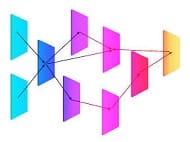To proceed to know the meaning of the term hypertext, it is necessary, first of all, to discover its etymological origin. In this case, we can highlight that it is a word that is a neologism and that is the result of the sum of two lexical components from different languages:
-The Greek word “hyper”, which can be translated as “above” or “on”.
-The Latin noun “textus”, which is synonymous with “written work”.
Likewise, we have to establish that this term was coined in the 1960s, specifically in 1963, by the American philosopher and sociologist Ted Nelson (1937). He has already gone down in history for being a pioneer of information technology and for creating the terms hypermedia and hypertext.
The idea of hypertext is used in the field of computing to name the structure of texts, images, videos, audios and other resources that are linked to each other by links . It is a tool that allows you to relate information from different sources through associations and logical connections.
 Hypertext is the basis of Internet navigation. In this case, it is achieved through hyperlinks, which are cross references between various documents. When the browser selects a hyperlink, the browser directs them to the linked document.
Hypertext is the basis of Internet navigation. In this case, it is achieved through hyperlinks, which are cross references between various documents. When the browser selects a hyperlink, the browser directs them to the linked document.
Let's take the case of a person who, after turning on his computer, opens the Chrome browser . In the address bar of the program, write the digital address of the Spanish sports newspaper Marca ( https://www.marca.com ). Once the cover loads, this user is interested in a note about Real Madrid and clicks with the mouse on the title. In this way, you access the article in question. This possibility of moving from one document (the Marca cover) to another (the note about Real Madrid ) is given by hypertext. The reader can then access other related texts, always making use of the hypertextuality of the Web.
No less important is establishing the main identifying features of a hypertext. Specifically, it needs to be interactive, multimedia, can be used multiple times, digital, and also connective. Likewise, we must not overlook that it has to be transitory and, of course, extensible since it allows the reading to be extended to other texts and content.
Closely related to hypertext is the aforementioned term hypermedia, which refers to the set of procedures and methods that are carried out with the aim of composing, designing and shaping content where text, images and videos are present. as well as audio or maps and that allows interaction with different users.
Hypertextual narration , on the other hand, is known as narration based on hypertext. These works consist of different texts linked by links. This allows the reading to be non-linear, but rather each subject can follow their own path according to the links they choose.
